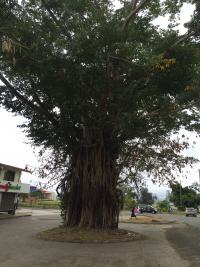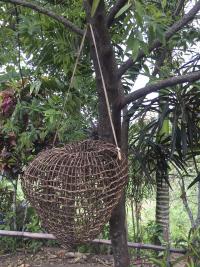kaipaip sei kuekau
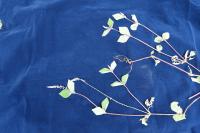
listenloadingplaying
n.
Example: Children take the inflorescence of this plant and use it to find and poke lizards hiding in the bush. For treatment of an unspecified spiritual sickness, chew 2, 2" pieces of the stem to get rid of the sickness, spitting the material on the hair and body of an ill person; use only 1 time.
Scientific name: Cyathula prostrata, Speaker: Martial Wahe
bookmark
kasusu
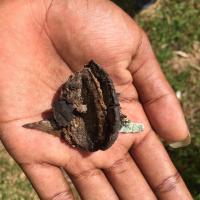
keipeipwi yasuk
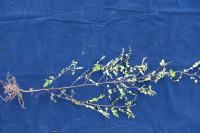
listenloadingplaying
n.
Example: Tricks the rat, sees seeds from bottom, but when climbs herb, can’t see it--so name refers to tricking the rat. If a person drinks too much kava over many years, boil 5-6 whole plant for 15 minutes in water (1.5 L) and put in pot, drink 3 cups, 1x / day for 3 days to detoxify the effects of kava. A person who has drunk too much kava over a long time feels it in the body--weak, hard to wake early, appetite is low, body feels heavy.
Scientific name: Phyllanthus imbricatus, Speaker: Johnson Noar
bookmark
kenasenas
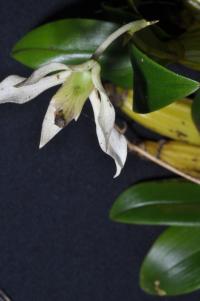
listenloadingplaying
n.
Example: The yellow seeds are used are used to paint faces. The use is currently practiced by children and thought to be an archaic use.
Scientific name: Dendrobium, Speaker: Martial Wahe
bookmark
khaw khawisel
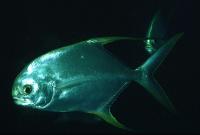
koniapit
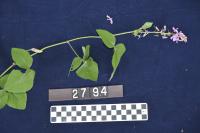
konquaequae

listenloadingplaying
n.
Example: Young plants for roof rafters, larger plants used for house posts. Women who get pregnant with someone else besides husband use this to abort. Boil a double handful of scraped stem in water and drink 1 cup four times daily to abort. Fruits are edible. Cut it open and eat what’s inside.
Scientific name: Finschia chloroxantha, Speaker: Martial Wahe
bookmark
konuwak
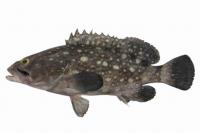
kwankumaha
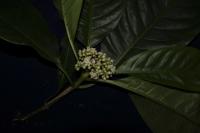
listenloadingplaying
[kwankuma]
n.
Example: The leaves of this plant are used to feed to pigs.
Scientific name: Psychotria, Speaker: Jean Pascal Wahe
bookmark
manuri

listenloadingplaying
n.
Example: Fishing poles. House walls. Fence for chickens.
Scientific name: Bambusa vulgaris, Speaker: Johnson Noar
bookmark
minin tonga

namiraou

listenloadingplaying
[nami̤rou]
n.
Example: The wood is used to make house posts, it is said to be very hard. It is also burned for firewood.
Scientific name: Glochidion, Speaker: Jean Pascal Wahe
bookmark
nerer
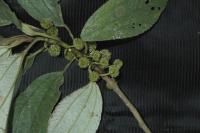
listenloadingplaying
n.
Example: Fuel: Dry portions of this plant are used as firewood. Fish Poison: To help catch fish, a bundle of leaves are squeezed and placed in a stream. After some time, the fish appear stunned and are caught.
Scientific name: Leucosyke australis, Speaker: Emmanuel Maasi
bookmark
newou
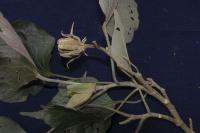
listenloadingplaying
[ne̤wo]
n.
Example: Used to treat pain. When a baby has an injection in the hospital, such as a vaccine, people take 1 handful of leaves, boil in a small amount of water to concentrate the resulting "juice" that comes out of the leaves, and put this fluid on the site of the pain, the injection, covering it with a leaf for 5-10 minutes, 2-3x daily until the baby stops crying.
Scientific name: Hibiscus tiliaceus, Speaker: Jean Pascal Wahe
bookmark
nikiskes

listenloadingplaying
[nɨkɨskɨs]
n.
Example: Hunting: Birds are attracted to this plant for their flowers. As a result, hunters gather around this plant when they desire to hunt these birds.
Scientific name: Amyema aneityensis, Speaker: Jean Pascal Wahe
bookmark
noukwerang
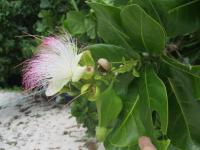
nuack
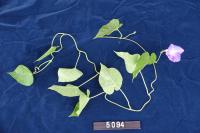
nɨfeg

listenloadingplaying
n.
Example: Stem to make house posts. Put fruits in with sweet potato when planting to enable the sweet potato to yield a good crop.
Scientific name: Macaranga, Speaker: Johnson Noar
bookmark
pasuwa
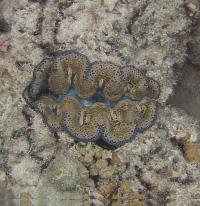
pawpawuk
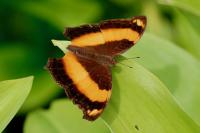
pirawa ~ firawa

pirei pirei

listenloadingplaying
n.
Example: Used in an unspecified way for pregnant women to ensure the baby to grow well. Used in an unspecified way to control the weather.
Scientific name: Commelina, Speaker: Emmanuel Maasi
bookmark
rerenakuang
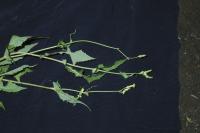
listenloadingplaying
[rerenakwaŋ]
n.
Example: Children are said to chew the branches of this plant to give them a "bigger (stronger) voice.
Scientific name: Sonchus oleraceus, Speaker: Jean Pascal Wahe
bookmark
Takiaew sei tasi
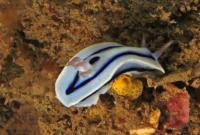
taoura ia nipeka

trimian
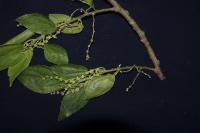
listenloadingplaying
n.
Example: People use this plant to soften the hair, by taking the roots and stem, pounding them with a stone, and squeezing the juice into the hair--it is said to make it very soft.
Scientific name: Nothocnide repanda, Speaker: Emmanuel Maasi
bookmark
tui-tui

listenloadingplaying
n.
Example: The leaves of this plant are used to cover the hot stone ovens when cooking lap-lap. The ripe fruit is used to burn as a lap. Take the seeds, impale on the fiber in the middle of a coconut leaf pinnae and light, holding the slender stick and lighting a person’s way.
Scientific name: Ricinus communis, Speaker: Emmanuel Maasi
bookmark
tuprepai

listenloadingplaying
n.
Example: The wood of this tree makes good house posts and is also used as firewood
Scientific name: Claoxylon, Speaker: Martial Wahe
bookmark
turlmata

listenloadingplaying
[turma:ta]
n.
Example: The vine is used for rope. Collect a length of vine appropriate for the task, heat it over a fire, peel the outer "skin" off and use the rest of the vine, fresh, to tie the poles and rafters used to make a traditional house.
Scientific name: Cayratia trifolia, Speaker: Jean Pascal Wahe
bookmark
warakou pshir























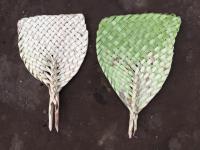

-scaled.jpg)








